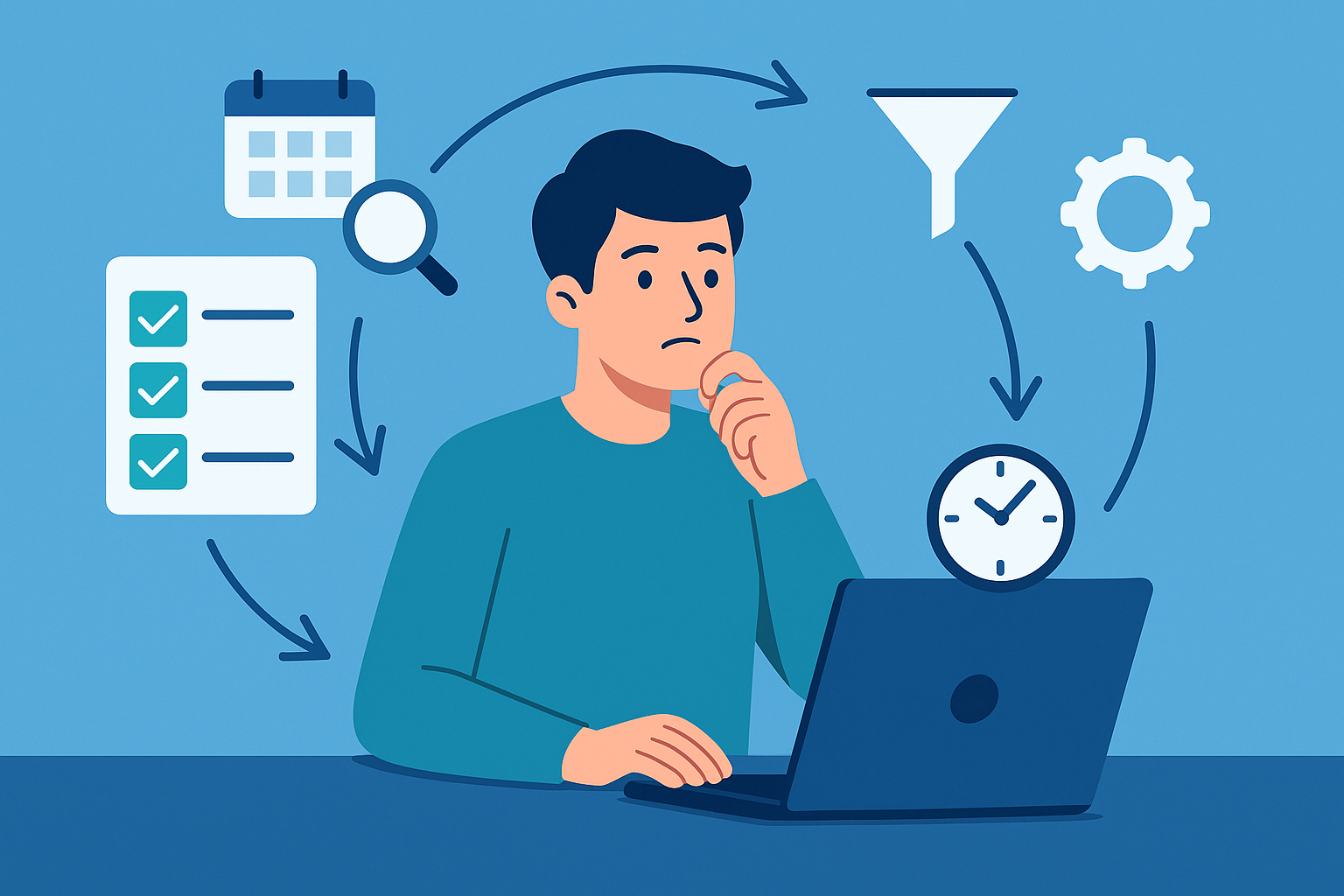Why Most Unified Inboxes Still Don’t Solve Context Switching
While unified inboxes promise consolidation, many still fail to truly eliminate context switching. Discover why and what's missing from current solutions.

If you've ever bounced between emails, chats, calendars, and task apps in the span of five minutes, you already know the mental drain of context switching. It's not just multitasking, it's the exhaustion that sets in every time your brain is forced to stop, refocus, and restart.
Unified inboxes promised to simplify this. One place for all your communications, finally. But for many professionals, they’ve become a polished hub for the same distractions. Instead of reducing switching, most tools just condense the noise.
Before diving into why that happens, you might want to explore our breakdown of today’s top tools: The 7 Best Unified Inbox Apps in 2025. It outlines which platforms help, and which still miss the mark.
What Is Context Switching and Why It Hurts Focus
Context switching is the act of rapidly shifting from one task to another, like replying to a client email, then a Slack DM, followed by checking your calendar, then jumping into a team update. It pulls from your brain’s limited cognitive reserves.
Studies suggest this switching can cut productivity by up to 40%. It’s not just the time it takes to click between tabs. It’s the hidden cost: attention fatigue, fragmented memory, and reduced focus. You feel busy all day but end up drained with little deep work to show for it.
The Benefits and Challenges of Unified Inboxes
At first glance, unified inboxes seem like the answer. Apps like Mailbird, Spark, Shift, and others combine email, Slack, Teams, WhatsApp, and even calendar tools into a single dashboard. The pitch is appealing: less tab-switching, more flow.
But here’s the problem. These platforms often just aggregate messages, they don’t structure them in a way that protects your focus. Without intelligent prioritization or personalized modes, you’re still bombarded with everything at once. Instead of solving context switching, they make it easier to stay distracted.
Where Unified Inboxes Fall Short
No Sense of Urgency or Relevance
Most unified inboxes display every input—Slack pings, newsletters, client emails, app alerts—in a single stream. Your brain has to manually triage each message, wasting mental energy figuring out what matters and what doesn’t.
Lack of Workflow Awareness
Few tools ask the essential question: “What are you doing right now?” If you’re writing a report, your inbox should adjust—suppressing unrelated updates. But most apps continue feeding everything, regardless of your focus.
Weak Focus Modes
While some platforms offer “focus modes” or basic filtering, few go far enough. Ideally, your inbox would adapt in real time. Working on a project? Only relevant updates should break through. Otherwise, silence.
What We Actually Need to Fix Context Switching
To truly reduce mental fragmentation, unified inbox tools need to evolve beyond simple aggregation.
Context-Aware Prioritization
Imagine an inbox that knows you’re in marketing mode, and only surfaces marketing-related threads. This kind of dynamic filtering could dramatically reduce distraction.
Smart Batching
Notifications should arrive in batches at scheduled intervals, not constantly. This promotes intentional review rather than reactive clicking.
Intentional Separation
Sometimes, merging everything isn't the answer. Smart silos, like separating client communication from internal chat, can provide your brain with necessary structure.
The Role of Unified Communications Platforms
A few platforms are beginning to bridge the gap between inboxes and full digital workspaces. Microsoft Loop, Slack’s canvas, or Huddles are experimenting with deeper connections between tasks, messaging, and meetings. The goal isn’t just fewer tabs, it’s smarter collaboration.
That said, most unified inboxes aren’t there yet. For now, the burden still falls on the user to define what matters, mute what doesn’t, and create personal systems for reducing noise.
Tips to Manage Context Switching While Tools Catch Up
Even without perfect software, there are ways to protect your attention.
● Time blocks your communication: Designate specific windows to check Slack or email.
● Use do-not-disturb modes: Silence non-urgent messages during deep work blocks.
● Turn off unneeded integrations: Reduce the number of apps pinging your inbox.
● Treat your inbox like a task list: Review messages in batches, not as they arrive.
These practices may seem small, but they reclaim space in your day and reduce the chaos.
Final Thoughts: Integration Isn’t the Same as Focus
Unified inboxes were supposed to solve the chaos of modern communication. And while they’ve helped streamline how we access messages, they haven’t fixed how we engage with them.
The real challenge isn’t just about merging platforms, it’s about minimizing the mental gear-shifting that happens in between. Until tools become truly context-aware, the key to better focus is still in your hands.
To explore what current unified inbox tools get right, and where they still fall short, don’t miss The 7 Best Unified Inbox Apps in 2025.
FAQ: Unified Inbox Context Switching
What is context switching in digital work?
Context switching is when your brain shifts from one unrelated task or tool to another, like checking Slack after answering an email. It leads to mental fatigue and reduced focus.
Do unified inboxes reduce context switching?
Not always. While they centralize communication, most still display everything at once without prioritizing relevance or urgency.
What features should a context-aware inbox have?
It should include smart batching, focus modes, and real-time filtering based on your active task or workflow.
Can unified communication platforms help?
Yes, but only if they integrate tasks, messages, and meetings meaningfully. Otherwise, they risk becoming another source of noise.
How can I reduce context switching now?
Use scheduled check-ins, mute low-priority apps, and review messages in blocks rather than reacting in real time.


